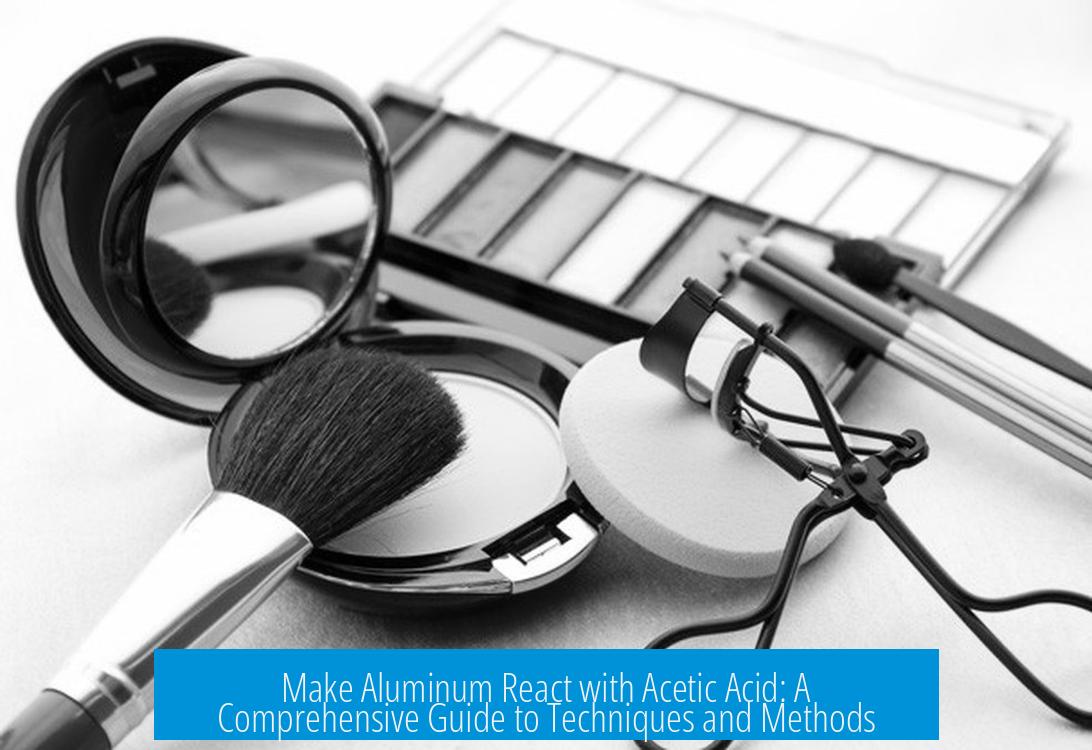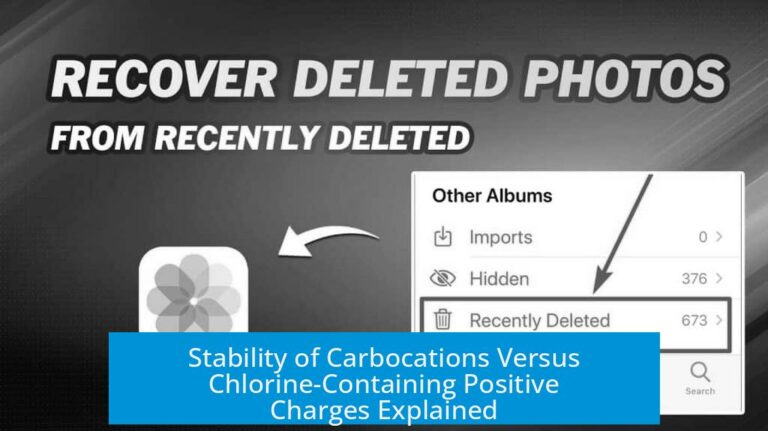How to Make Aluminum React with Acetic Acid
Aluminum does not readily react with acetic acid in its natural, oxidized state. The key to enabling this reaction lies in removing or penetrating the protective oxide layer on aluminum, often requiring pre-treatment steps or chemical mediation. The direct conversion of aluminum metal to aluminum tri-acetate by simply mixing with acetic acid is inefficient. Instead, an effective approach involves transforming aluminum into soluble sodium aluminate first and then reacting this intermediate with acetic acid to yield aluminum acetate compounds.
1. Understanding the Aluminum Oxide Barrier
Aluminum metal is coated with a thin layer of aluminum oxide (Al2O3). This oxide is highly stable and prevents direct reaction between the pure aluminum beneath and many chemicals, including weak acids like acetic acid.
This oxide layer acts as a barrier. It stops aluminum from reacting immediately with acetic acid under normal conditions. Removing or overcoming this oxide is essential for further chemical processes.
2. Pre-treatment of Aluminum to Facilitate Reaction
One practical step is mechanical removal of the oxide layer. Using sandpaper to scuff the aluminum surface removes this oxide, exposing fresh metal underneath. Only a brief scuffing is necessary before introducing aluminum to acetic acid.
- Sandpapering increases surface reactivity by eliminating the oxide.
- This step is straightforward and does not require chemicals.
Another proposed method, inspired by preparation of Grignard reagents, involves using iodine and heating the aluminum gently. This might help deoxidize the surface by breaking oxide bonds, allowing the metal to react more readily. However, this approach is experimental for aluminum and might not be necessary for typical laboratory use.
3. Challenges of Direct Aluminum-Acetic Acid Reaction
Direct reaction of aluminum with acetic acid to produce aluminum tri-acetate (Al(CH3CO2)3) is not practical.
Although aluminum tri-acetate is a known compound, simply mixing metallic aluminum and acetic acid is slow and inefficient because the oxide layer resists attack. This makes direct synthesis highly challenging without additional steps.
Moreover, acetic acid is a weak acid and does not aggressively dissolve aluminum oxide, unlike stronger acids such as hydrochloric acid.
4. Using Sodium Hydroxide to Generate Sodium Aluminate
To overcome this challenge, the common method is to first dissolve aluminum oxide in a basic medium, forming sodium aluminate, before converting it to aluminum acetate.
Step 1: Formation of Sodium Aluminate via Aluminum Oxide Dissolution
The aluminum oxide layer reacts slowly with sodium hydroxide (NaOH) in water:
Al2O3 (s) + 2 NaOH + 3 H2O → 2 NaAl(OH)4 (aq)
This is a slow, non-gaseous process that may appear dormant while the oxide dissolves.
Step 2: Reaction of Aluminum Metal with NaOH and Water
Once the oxide layer is removed, the aluminum metal underneath reacts rapidly with aqueous sodium hydroxide and water:
2 Al (s) + 6 H2O + 2 NaOH → 2 NaAl(OH)4 + 3 H2 (g)
- This reaction produces hydrogen gas.
- It serves to convert aluminum metal fully to soluble sodium aluminate.
This two-step alkaline dissolution effectively solubilizes aluminum by converting it to sodium aluminate, a key intermediate for later reactions.
5. Converting Sodium Aluminate to Aluminum Acetate
After sodium aluminate is prepared, adding acetic acid converts it to aluminum acetate derivatives.
The reaction between sodium aluminate and acetic acid proceeds as follows:
NaAl(OH)4 + 3 CH3CO2H → CH3CO2Na + Al(CH3CO2)2OH ↓
Key points about this reaction:
- Aluminum di-acetate hydroxide, Al(CH3CO2)2OH, precipitates as a solid.
- Sodium acetate (CH3CO2Na) remains dissolved in the solution.
- Not all additions of acetic acid convert fully to aluminum tri-acetate because the tri-acetate form is water-soluble, while the di-acetate form precipitates.
6. Forming Aluminum Tri-acetate from Aluminum Di-acetate
Aluminum di-acetate solid can react further with acetic acid to form the tri-acetate:
Al(CH3CO2)2OH + CH3CO2H → Al(CH3CO2)3 + H2O
Through this reaction, aluminum tri-acetate is formed in solution.
To obtain solid aluminum tri-acetate:
- Allow the solution to evaporate slowly for crystalline formation.
- Or boil off water to yield aluminum tri-acetate powder.
7. Alternative Methods to Break the Oxide Barrier
Another tactic involves using molten metals such as gallium or mercury to alloy with aluminum. This process locally disrupts the oxide layer.
Small amounts of molten gallium penetrate the oxide, exposing fresh aluminum metal beneath. This catalytic effect promotes subsequent reactions. However, contamination with gallium may be a concern depending on the application.
Summary Table: Aluminum Reaction Pathway with Acetic Acid
| Step | Reagents/Conditions | Products | Notes |
|---|---|---|---|
| 1. Oxide Removal | Sandpapering or NaOH (alkaline) | Fresh aluminum surface or NaAl(OH)4 | Oxide layer hinders direct reaction |
| 2. Aluminum + NaOH + H2O | Al + NaOH + H2O | NaAl(OH)4 + H2↑ | Hydrogen gas produced; fast reaction |
| 3. Sodium Aluminate + Acetic Acid | NaAl(OH)4 + CH3COOH | Al(CH3CO2)2OH (solid) + CH3CO2Na (aq) | Di-acetate precipitates |
| 4. Aluminum Di-acetate + Acetic Acid | Al(CH3CO2)2OH + CH3COOH | Al(CH3CO2)3 + H2O | Tri-acetate in solution, isolable by evaporation |
Key Takeaways
- Aluminum’s oxide layer blocks direct reaction with acetic acid.
- Mechanical removal or chemical dissolution of oxide is required.
- Converting aluminum to sodium aluminate with NaOH is efficient.
- Acetic acid then converts sodium aluminate to aluminum di-acetate.
- Further reaction with acetic acid yields aluminum tri-acetate.
- Molten gallium can disrupt oxide but may contaminate the product.
- Direct synthesis of aluminum tri-acetate from metal and acetic acid is not practical.





Leave a Comment